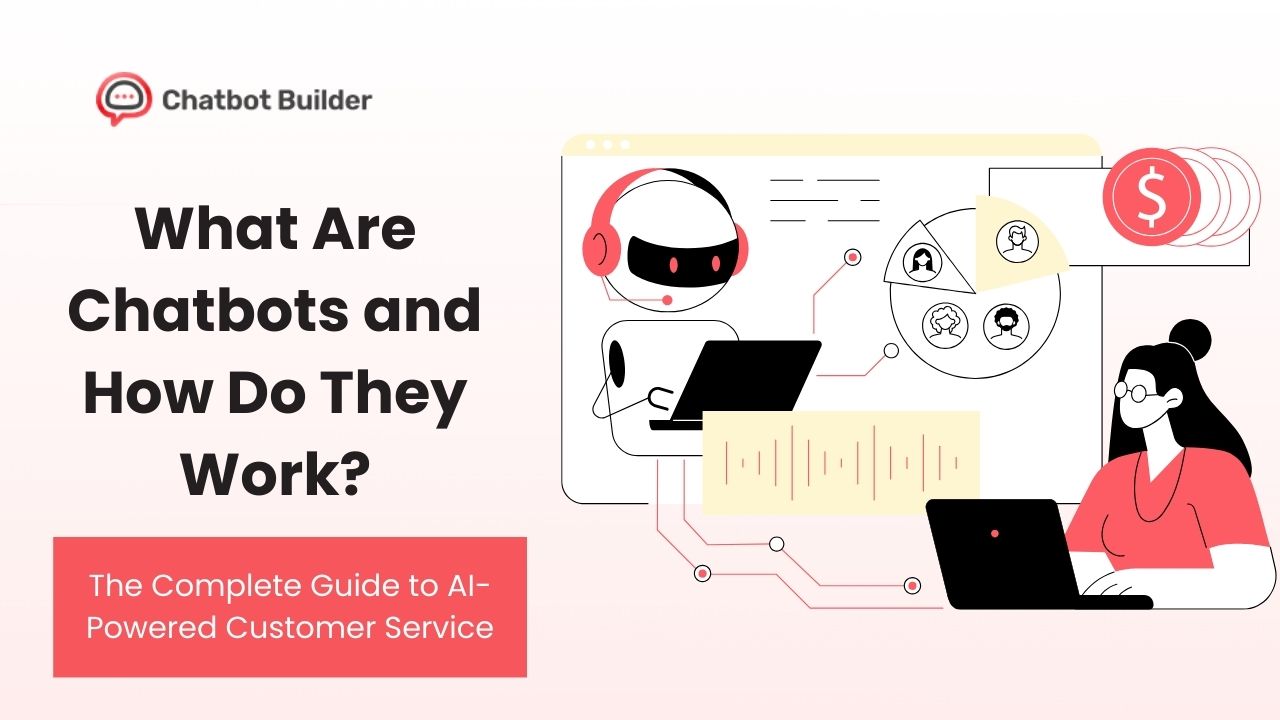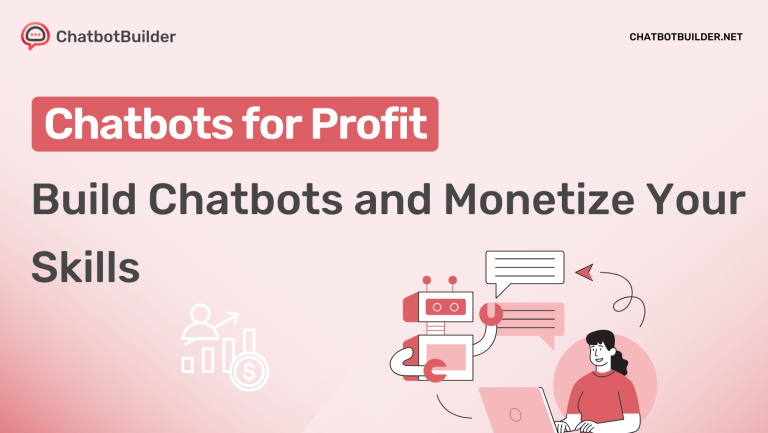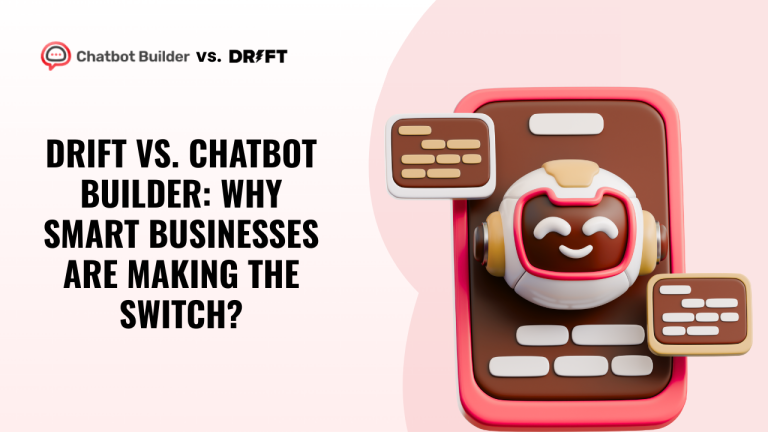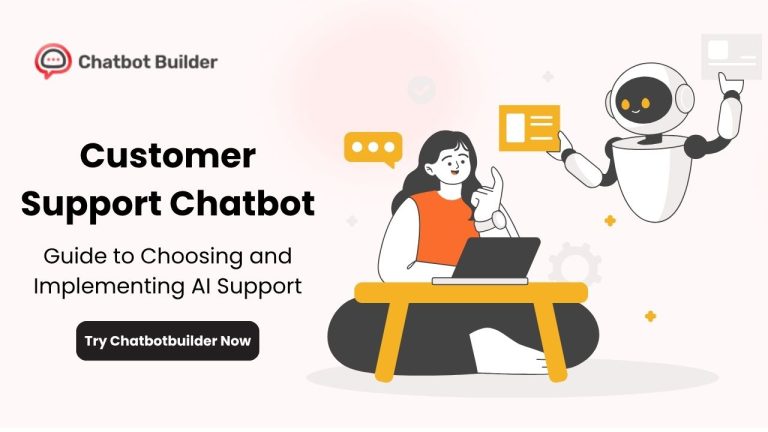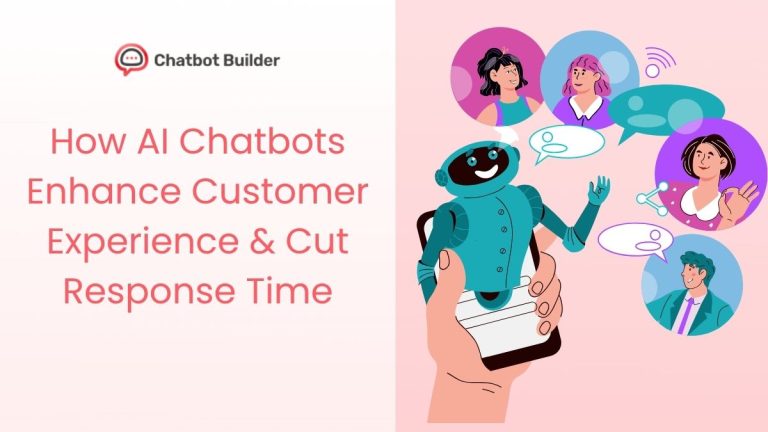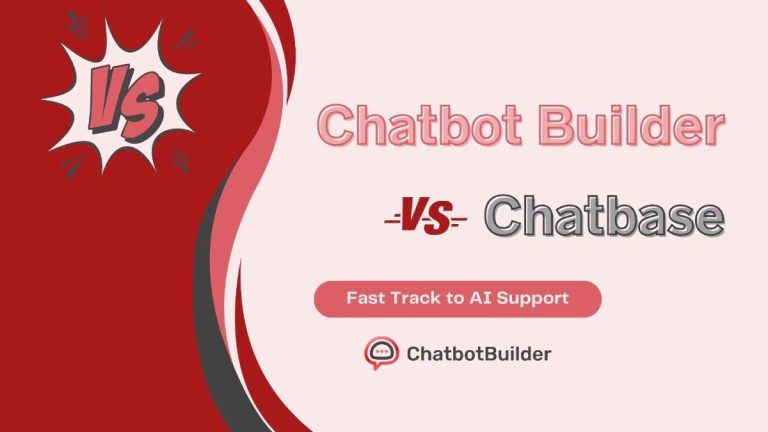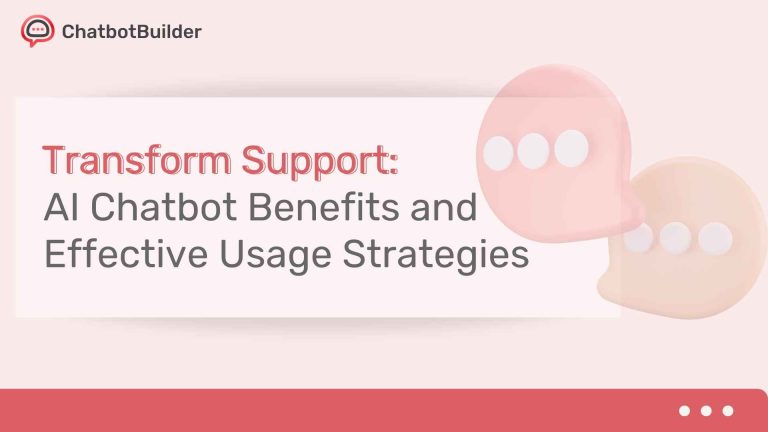You’ve probably chatted with one without even knowing it. That helpful “person” who answered your question on a website at 3 AM? Probably a chatbot. These artificial intelligence conversation aids, virtual assistants, and automated messaging platforms have quietly conquered customer service, sales, and user interaction on millions of websites.
The stats are astonishing. According to Mordor Intelligence, the market for chatbots was $7.01 billion in 2024 and is expanding at a rate of 24.32% to become $20.81 billion by 2029. Even better, AI-based chatbots are set to become $46.64 billion by 2029, expanding at a rate of 24.53% per annum. Smart businesses utilize conversational AI technology and customer service robots to handle 80% of mundane queries so that human customer service agents can work on complex problems. Whether you are the owner of an online business or in the customer relationship management business, learning about chatbots and AI chat systems can revolutionize the way your business operates.
AI-Powered Chatbots: More Than Just Automated Responses
Imagine chatbots as virtual employees who never sleep, never get tired, and can handle thousands of interactions at once. Intelligent chatbots and virtual customer assistants are computer programs that are made to mimic human conversations through text or voice communication.
The magic is done using machine learning models and natural language processing (NLP). When you type “What are your store hours?” The chatbot translates your input, determines your intention (inquiring about business hours), and returns the proper response from its database.
Types of Chatbot Systems You’ll Find
Rule-Based Chatbots (Decision Tree Bots) These have pre-defined conversation flows. Imagine them as flowcharts on the computer screen. User types A, bot answers B. Straightforward yet efficient for simple customer service automation.
AI-Powered Chatbots (Machine Learning Bots) These smart AI-operated agents learn from each conversation in real time. They understand the context, remember the previous conversation and improve over time. Popular chatbot platforms like those found on ChatbotBuilder.net specialize in these advanced systems.
Hybrid Chatbots are the best of both worlds. They use rules for common questions but switch to AI for complex queries. Most successful businesses deploy hybrid automated chat systems.
How Chatbot Technology Actually Works Behind the Scenes
Picture this: You visit a website and type “I need help with my order.” This is what occurs in milliseconds:
Step 1: Message Processing
Your natural language understanding (NLU) engine processes the chatbot. It detects keywords such as “help” and “order” as it determines your emotional tone.
Step 2: Intent Recognition
Your message is matched against thousands of potential intents within its training data by the system. “Order help” triggers the customer service pathway.
Step 3: Entity Extraction The bot identifies specific information needed. Order number? Email address? Product type? It knows what questions to ask next.
Step 4: The Response Generation that uses its knowledge base and conversation management system and creates a reaction. Advanced AI chatbots can also adjust your tone depending on your mood.
Step 5: Learning Loop Every interaction trains the machine learning model. Bad responses get flagged, good ones get reinforced.
The Technical Stack That Powers Modern Conversational AI
Most chatbot development platforms combine several technologies:
- Natural Language Processing: Understands human language nuances
- Machine Learning Models: Improve responses through experience
- Dialog Management: Maintains conversation context
- Integration APIs: Connect with your existing business tools
- Analytics Engine: Tracks performance and user satisfaction
Business Benefits That Actually Move the Needle
Smart companies using chatbot solutions report measurable improvements across key metrics. According to recent data, 67% of businesses report increased sales through chatbot deployment, primarily through proactive cross-selling and upselling features. Statistics do not lie: 87.2% of consumers have positive or neutral conversations with Chatbot, while 62% of consumers actually prefer to use a chatbot to wait to speak with human agents.
Customer Service Efficiency Automated customer help systems immediately handle 70–80% of general questions. No wait, no phone queue, no disappointed customer hangs. Research shows that only 18% of people are willing to wait 15 minutes to speak with a live agent, making instant chatbot responses a competitive advantage.
Cost Reduction That Adds Up One chatbot can replace 2-3 customer service representatives for basic inquiries. That’s $60,000-$90,000 in annual salary savings, plus benefits and training costs. The data backs this up: 64% of customer service agents who utilize AI chatbots can spend most of their time solving complex cases rather than answering repetitive questions.
24/7 Availability Without Overtime Your virtual assistant works weekends, holidays, and 3 AM shopping sessions. International customers get instant help regardless of time zones. Nearly one out of four customer service organizations already employ AI-driven chatbots to serve their customers around the clock.
Lead Generation on Autopilot Chatbots for websites can qualify prospects, schedule appointments, and collect contact information while you sleep. Many businesses double their lead capture rates with intelligent chatbots. The sales and marketing segment accounts for the highest revenue share in chatbot implementations because of their effectiveness in automating customer interactions.
Data Collection Goldmine Every conversation provides insights into customer pain points, popular products, and frequently asked questions. This data fuels better business decisions.
Chatbot Implementation: Getting Started Without Breaking the Bank
Choosing the Right Chatbot Platform – Chatbotbuilder.net
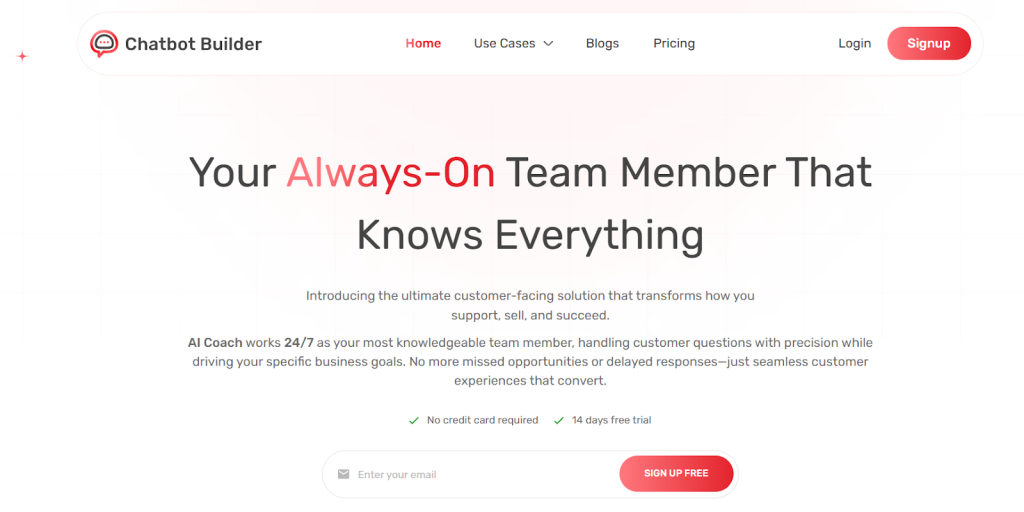
Not all chatbot builders are created equal. Look for platforms offering:
- Visual conversation flow designers
- Pre-made template for your industry
- Integration with your existing CRM and help desk tools
- Analytics and reporting capabilities
- Multi-channel deployment (website, Facebook, WhatsApp)
Quality chatbot development services typically offer free trials. Test the platform before committing the annual contracts.
Avoid General Implementation Errors
Over-promising: don’t claim your bot can do everything. Specify clear expectations of what can handle your automated message system.
Ignoring the Human Handoff Even the smartest AI chat system needs human backup. Build smooth escalation paths for complex issues.
Generic Responses That Sound Robotic Customize your chatbot’s personality to match your brand. A law firm’s bot should sound different from a pizza shop’s bot.
Don’t forget mobile optimization, 60% of chatbot interactions happen on mobile devices. Test your convergent AI tool on smartphones and tablets.
Advanced Chatbot Strategies That Separate Winners from Wannabes
Personalization at Scale
Modern Chatbot techniques can remember customer preferences, buying history and communication style. When Sara returns to your site, greet her by name and ask about her last purchase.
Proactive Engagement
Instead of waiting for questions, Smart chatbots interaction starts based on the user’s behavior. If a visitor spends more than 3 minutes on the pricing page? The bot offers a discount or free consultation.
Multi-Language Support
Global companies use AI-powered customer service bots that communicate in 50+ languages. One chatbot, worldwide customer support.
Integration with Business Intelligence
You have an option to connect your AI chatbot platform to your CRM, inventory system, and order management tools. Customers receive real-time order status updates and personal product recommendations.
Industry-Specific Chatbot Applications
E-commerce chatbots handle product inquiries, process returns, track shipments and recommend additional items. Amazon’s chatbot handles millions of customer service requests daily.
Healthcare chatbots can act as virtual assistants, respond to insurance questions, provide basic medical information and fulfill the patient’s concerns. HIPAA-compatible chatbot solution ensures data security.
Financial service bots check account balances, transfer funds, interpret fees and advise investments. Banks reported a 40% decrease in the call center volume after distributing the conversational AI chatbot tool.
Real estate chatbots help to identify buyers, schedule property tours, provide neighboring information and combine opportunities with agents. Lead conversion rates increase by 25-35%.
Measuring Chatbot Success: Metrics That Matter
User Engagement Metrics
- Conversation Completion Rate: Percentage of users who complete their intended task (industry average: 85-90% for well-designed bots)
- Session Duration: How long users connect to your automatic chat system (average: 3-7 minutes for effective interaction)
- Return User Rate: How many people come back to use Chatbot again (see successful bots 40-60% return rate)
Business Impact Metrics
- Cost Per Conversation: Compare chatbot costs with human agent cost ($0.50- $2 per chatbot call against $15-25 per human agent interaction)
- Lead Generation Rate: The number of qualified leads attracted by chatbot interaction (top-performing bots generate 3x more leads than traditional forms)
- Customer Satisfaction Scores: Post-chat surveys reveal customer satisfaction levels. (87.2% consumers report positive or neutral chatbot experiences)
- Resolution Rate: Percentage of problems resolved without human interaction (Objectives: 70-85% for regular inquiry)
Technical Performance Metrics
- Response Time: How soon your chatbot development platform answers (Dimensions: less than 2 seconds)
- Uptime Percentage: System reliability and accessibility (aim at 99.9% uptime)
- Error Rate: The frequency of misunderstanding of messages or system errors (hold less than 5% for optimal performance)
Common Chatbot Challenges and Solutions
The “Chatbot Loop” Problem
Users are stuck repeatedly asking the same question without receiving useful answers.
Solution: Use conversation memory and reference awareness in the AI chatbot system.
Privacy and Data Security Issues
Customers worry about sharing personal information with automated systems.
Solution: Show clear privacy rules and use encrypted chatbot platforms with security quality security.
Integration Headaches
Connecting a chatbot to existing business systems can be complicated.
Solution: Choose Chatbot Development Services with pre-made integration for popular CRM and e-commerce platforms.
Managing Customer Expectations
Users hope that chatbots will understand complex, nuanced requests.
Solution: Determine clear boundaries for cure and give a simple growth to human agents.
The Future of Conversational AI Technology
Voice-Activated Chatbots
Smart speakers and voice assistants join (together) with traditional text based chatbot. Soon customers will have a natural voice interaction with your business.
Emotional Intelligence AI
The next generation chatbot technique will detect customer feelings and adjust the reactions accordingly. Disappointed customers get sympathetic reactions, happy customers get upsell opportunities.
Predictive Customer Service
AI-powered chatbots will estimate the needs of customers based on behavioral patterns. Before the customer complains, your chatbot can proactively address issues like delayed shipments.
Augmented Reality Integration
Imagine chatbots that can see what customers look through their telephone cameras, provide visual troubleshooting and product performance.
Getting Started with Your First Chatbot
Step 1: Define Your Goals
What problems will you solve with your automatic customer service? Reduce support tickets? Increase sales? Improve user experience? Clear goals guide chatbot platform selection.
Step 2: Map Customer Journeys
Identify common questions and conversation paths. What do customers typically ask? Where do they get stuck? This research informs your conversation flow design.
Step 3: Select Your Platform
Evaluate chatbot builders based on your technical skills, budget and integration needs. Many successful businesses start with platforms like those offered at ChatbotBuilder.net for comprehensive features and easy setup.
Step 4: Design Conversation Flows
Create natural, helpful dialogues that match your brand voice. Write a conversation script that feels human, not robots.
Step 5: Testing and Repetition
Start with a simple chatbot and improvement based on the user itself. The best AI tools improve with time and data.
Ready to Transform Your Customer Experience?
Now you understand what chatbots are and how they work. You have seen the data, learned strategies and have discovered massive capacity for your business. Today, winning companies not only use chatbot technology, they use it strategically.
Your customers expect immediate reactions. Your competitors already distribute AI-powered customer service. Revenue is lost every day when you wait, disappointed customers and missed opportunities.
The nice thing about modern chatbot development is that you do not need informatics or big budget to start. Platforms such as Chatbotbuilder.net make it possible to launch their first automated customer service chatbot in days.
Start little. Choose a specific use case – maybe answer shipping questions or leading sales. Launch a simple AI tool, learn from data, and expand from there. After five years from now, companies that dominate their markets will take measures today.
Chatbot doesn’t have to be right in a day. It just needs to serve customers better than making them wait for answers. The rest of the time comes with data and smart repetition.
Stop wondering if chatbot can work for your business. Start building one and find out how much they can change customer relationships, the team’s productivity and your bottom line.
Frequently Asked Questions About Chatbots
Basic chatbot platforms start at $20-50 monthly for small businesses. Custom AI chatbot development ranges from $5,000-50,000 depending on complexity and features.
Intelligent chatbots handle 70-80% of routine inquiries, but human agents remain necessary for complex problems, emotional situations, and relationship building. Research shows that 64% of customer service agents who utilize AI chatbots can spend most of their time solving complex cases.
Simple rule-based chatbots can be deployed in 2-4 weeks using chatbot development platforms. Custom AI-powered chatbots typically take 2-6 months for full development and training.
Modern chatbot technology supports multi-channel deployment across websites, mobile apps, Facebook Messenger, WhatsApp, Telegram, and SMS. Users can start conversations on one platform and continue on another seamlessly.
Track key metrics like conversation completion rates, customer satisfaction scores, cost per interaction, and lead generation numbers.
E-commerce, healthcare, financial services, real estate, and SaaS companies see the highest ROI from chatbot implementation.
Quality chatbot platforms include machine learning capabilities that improve through interaction data. You can also upload industry glossaries, FAQ documents, and conversation examples to train your AI chat system on specific terminology and contexts.
Enterprise-grade chatbot development services offer encryption, compliance certifications (GDPR, HIPAA), and secure data handling protocols. Choose platforms with proven security track records and transparent privacy policies for sensitive applications.







